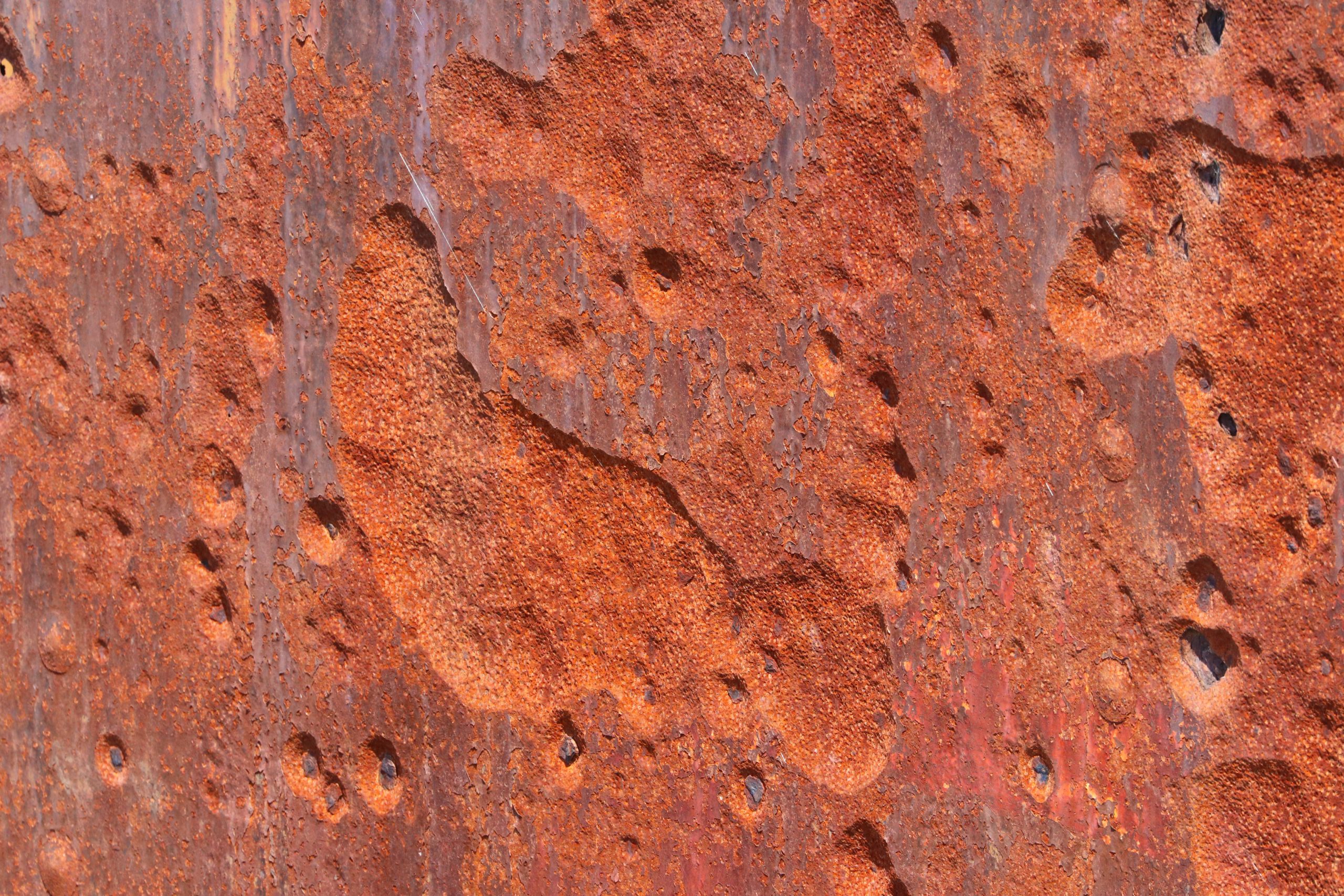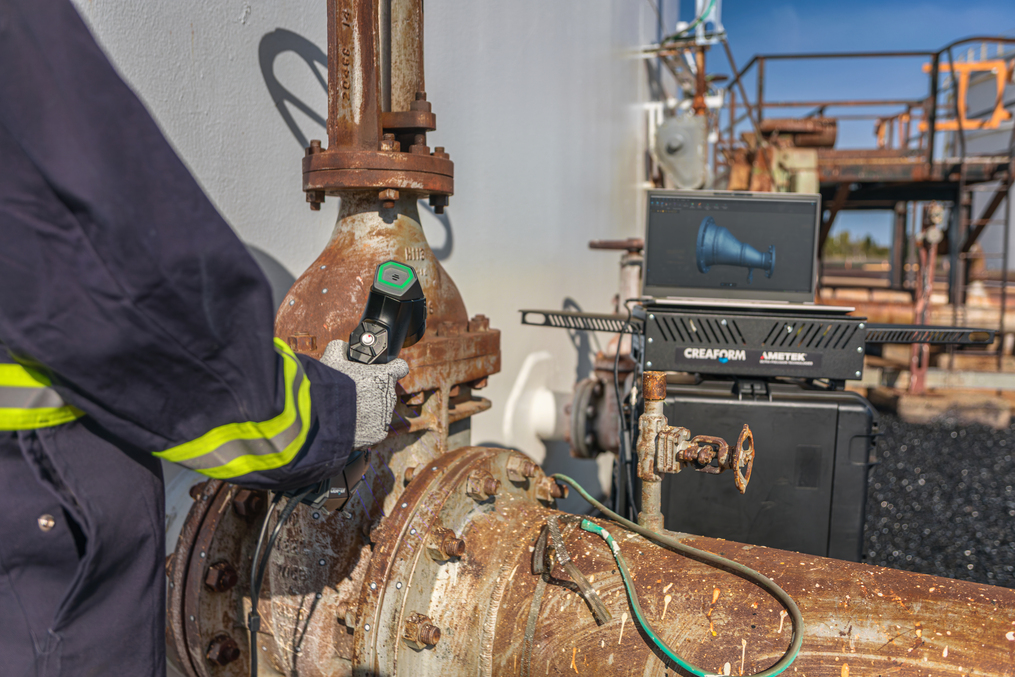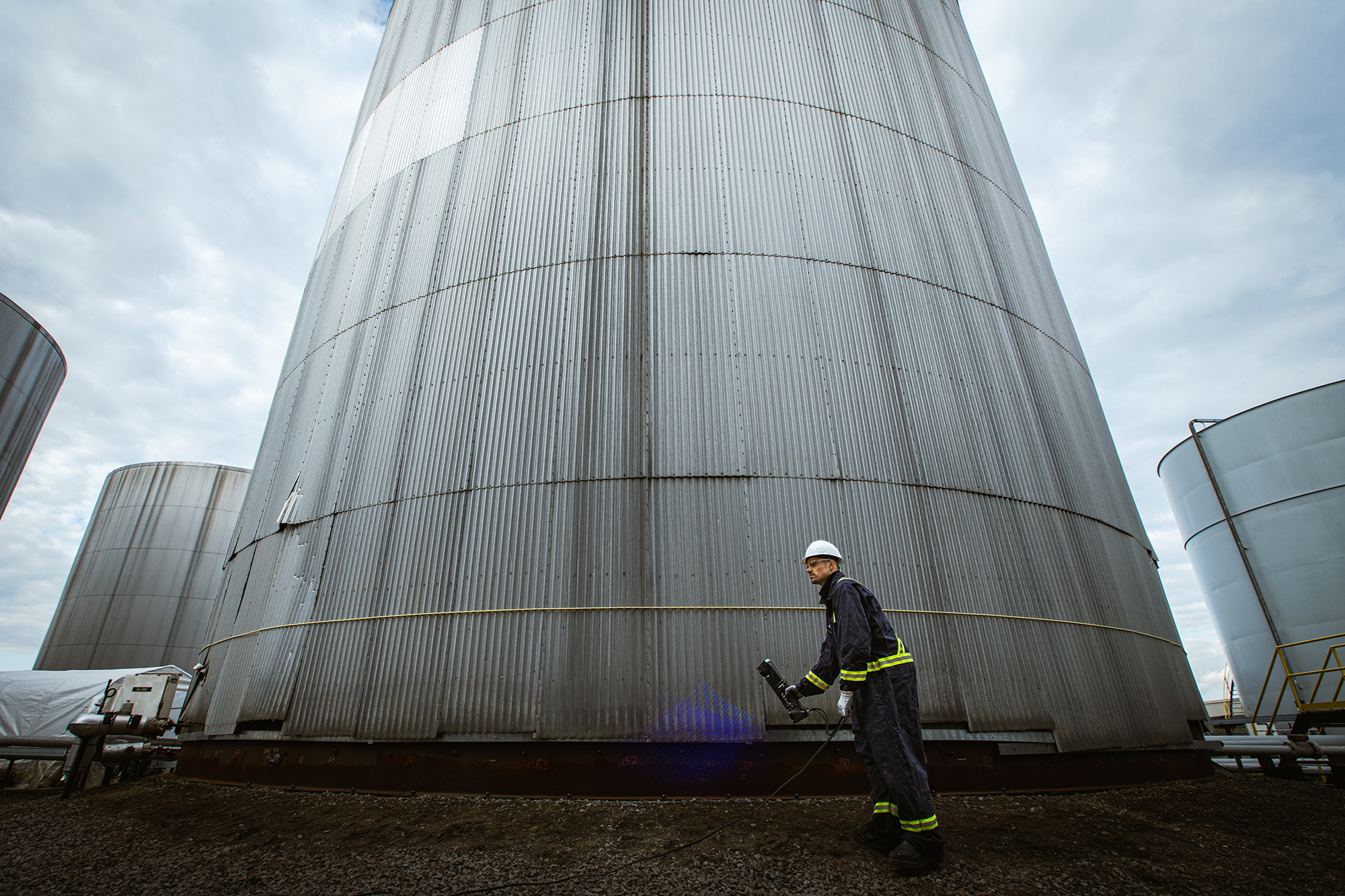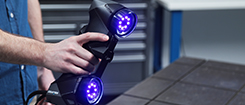July 24, 2024
Improving Vessel Integrity at a Refinery thanks to Advanced 3D Scanning Technology See the articleOur non-destructive surface evaluation solution for the pipeline industry has received valuable feedback since its launch last year. The suggestions for improvement include increasing the scanning capacity of our scanners and making our analysis algorithms more versatile for the geometries that our software supports.
Creaform has been attentively listening to the feedback and requests for improvement from its valued customers. We also have noticed a persistent trend in the requests. It has become clear that the limited alternatives available in the market for this type of assessment, particularly for large components and curved surfaces, have been the primary reason for these demands.
- 1 Pit Gauge Challenges for Large and Corroded Structures
- 2 Long-Range 3D Scanner Challenges for Large and Corroded Structures
- 3 Why Are Metrology-grade 3D Scanners a Good Alternative to Those Solutions?
- 4 3D Scanning vs Manuel Techniques on Curved Surfaces
- 5 New 3D Scanner Designed for Large Parts
- 6 Right Equipment for Better Decisions Based on Accurate Data
Pit Gauge Challenges for Large and Corroded Structures
The pit gauge is the preferred method for evaluating corrosion on large components due to its affordability and widespread availability in most industries. However, this technique has significant limitations.
Operators using the pit gauge may struggle to measure irregularly shaped pits or those with complex geometries accurately. The tool is typically designed for relatively simple, cylindrical pits and may not provide accurate readings for more intricate corrosion patterns. Additionally, the reliability of measurements is contingent on the skill and experience of the operator. Interpreting pit gauge readings requires a certain level of expertise, and variations in technique among different operators may lead to measurement inconsistency. Finally, while pit gauges are effective for localized measurements, they may not be suitable for assessing overall corrosion across large surfaces. Indeed, on a large structure, it can be challenging and time-consuming for operators to probe all surfaces and report all indications using the pit gauge.

Zoom on an area with severe corrosion and pitting that is usually very challenging to inspect and for which asset owners have difficulties trusting the results.
Long-Range 3D Scanner Challenges for Large and Corroded Structures
Long-range 3D scanners are gaining popularity with the democratization of Industry 4.0 and the widespread use of digital twins. Their use has increased over the past decade in various industrial applications, including the digitization of factories and critical infrastructures. These scanners are sometimes used to assess mechanical damages, such as dents in storage tanks or other large assets.
However, they are not typically used for corrosion assessment due to their limited resolution. This lack of precision makes detecting minor irregularities or mild corrosion challenging, as long-range scanners may not capture fine details with sufficient resolution.

NDT technician holding a metrology-grade 3D scanner and inspecting the corrosion on a corroded valve.
Why Are Metrology-grade 3D Scanners a Good Alternative to Those Solutions?
Ten years ago, Creaform revolutionized the pipeline industry by introducing 3D scanning technology. Nowadays, any specialized pipeline inspection service company must possess Creaform’s 3D scanner pipeline inspection solution to secure a service contract.
Compared to traditional techniques, the benefits of 3D scanning for corrosion inspection are significant. Metrology-grade 3D scanners are not only faster and more precise, but they also eliminate acquisition and reporting errors. With 3D scanning technology, generating reports on-site is now possible, which helps to make the right maintenance decision as quickly as possible with the most accurate data.
Moreover, this type of inspection creates a digital clone of the inspected asset, allowing the inspection to be revisited with the highest degree of precision and even track the progression of damages over time.
3D Scanning vs Manuel Techniques on Curved Surfaces
New 3D Scanner Designed for Large Parts
Creaform, continually recognized as a leading provider of 3D damage assessment solutions in the pipeline industry, is proud to announce the launch of a new metrology-grade 3D scanner for large parts. The HandySCAN 3D|MAX Series, combined with VXintegrity software, will transform the process of conducting damage assessments on large parts.
With the new 3D scanner, mechanical damage assessments of large-dimension assets, such as those with API 650, API 570, and API 510, now take only a fraction of the expected inspection time.
The MAX Series can digitize entire structures with a precision of 75µm, ensuring that the maximum thickness loss is captured. Once the surface is digitized, specialized software analyzes mechanical damages, such as corrosion or dents, without the need for CAD. The dimensions of all damaged areas are then automatically exported and documented.
Furthermore, if a more precise corrosion rate is required for the next inspection, it is possible to compare two damaged areas very precisely and observe any changes compared to the previous inspection.

NDT technician holding the HandySCAN MAX and inspecting corrosion under insulation at the bottom of a reservoir.
Right Equipment for Better Decisions Based on Accurate Data
Evaluating corrosion on large surfaces can be time-consuming and error-prone, and reporting these big areas can get messy and inaccurate. Therefore, service companies may benefit from better equipment to counter these challenges. The new HandySCAN 3D|MAX Series makes it easier to communicate the indications while ensuring 100% inspection coverage and eliminating human error on the data. As a result, service companies can increase their productivity by making better decisions based on accurate data they can now fully trust.
Learn More about Corrosion Assessment using 3D Scanning by registering to our webinar.








